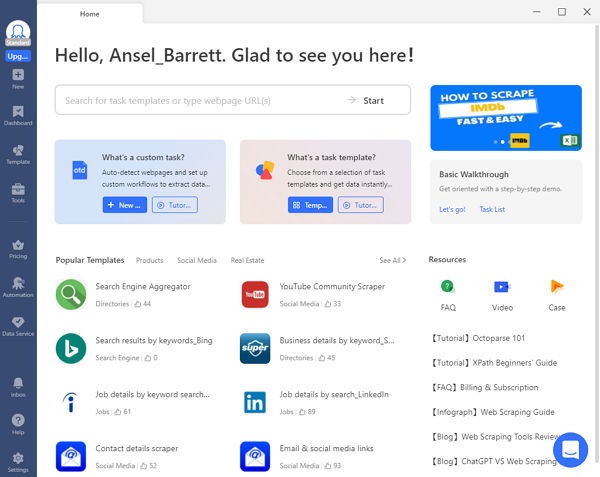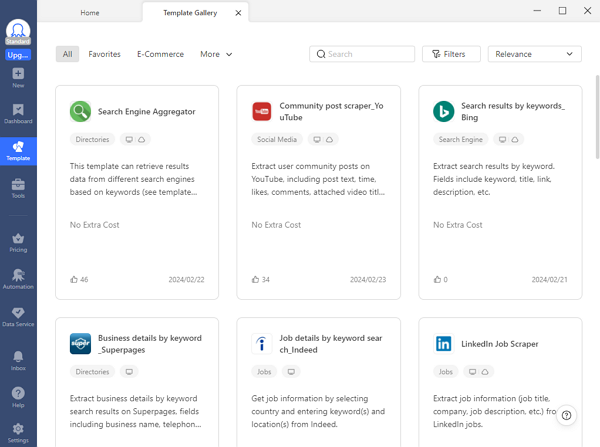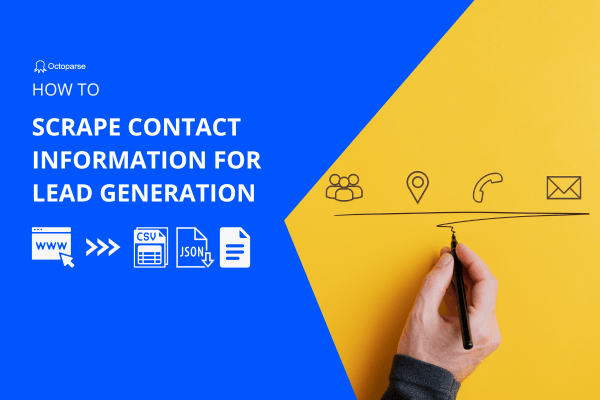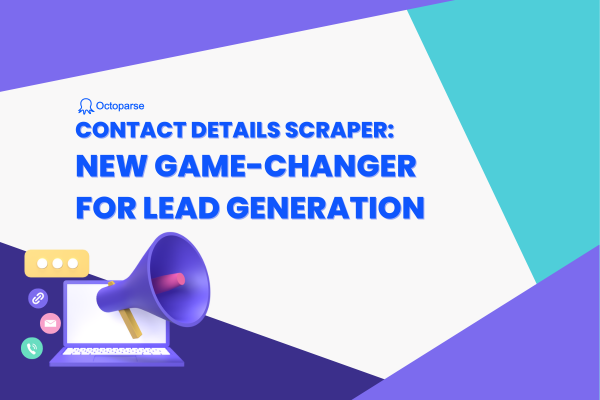When talking about leads, information about individuals might be the first thought that comes to mind for most people. But businesses that have expertise in lead generation, they’re well aware of the importance of company details. Key information like company size, industry, location, decision-makers, etc., can help them to pursue the most optimized leads with the greatest potential to turn into customers. In this post, we’ll walk you through how to build a company details scraper for your business with only four steps.
Why You Need Company Details
In short, thorough company details can strengthen every stage of the lead generation funnel from capturing to qualifying and engaging prospects. Here are some detailed reasons about the importance of company information for effective lead generation.
Identify ideal leads
Company info like size, industry, location, etc., provides you with valuable context to qualify if they are a good fit prospect for your business. Meanwhile, job titles of individuals at prospects can help you identify stakeholders and decision-makers to engage strategically. Eventually, you can save wasting time on poor fits but spend most of the effort on reaching potential customers.
Create effective outreach campaigns
Outreach, at the time, is closely linked with lead generation. Companies’ contact information, like websites, email domains, and phone numbers, allows you to reach out to prospects promptly and effectively. In addition, you can cleanse and analyze such information to address personalized details in initial outreach to leave a strong and tailored first impression.
Leverage nurture marketing
Nurture marketing is a strategic approach to place content in front of potential customers at various points in their journey. It involves systematically communicating with leads over an extended period to move them toward becoming customers. Successful nurture marketing requires a deep understanding of leads. Company details, in this context, can help you form insights into leads. Thus, you can deliver relevant content to leads based on who they are and eventually establish long-term relationships rather than one-time sales.
Where to Find Company Information
You can collect company information via many sources. For example, you can ask for company names, addresses, phone numbers, etc., on your website contact forms and downloads. But in most situations, companies might not give their information for initiative. Collecting company details from web pages is more feasible for most businesses.
- Social profiles: many companies have profiles on social media. For instance, you can look up potential leads on LinkedIn and pull company details from their profiles like name, location, employee count, etc.
- Online research: while searching company names on Google, you can also get information about companies. For example, you’ll find business listings, news mentions, and profiles on sites like Crunchbase that provide you with company overviews.
- Social listening: companies’ behaviors on social media can help you understand how engaged they are about some subjects. You can monitor industry hashtags and mentions to pick up on their name and distinguish potential prospects.
- Press releases: company blogs and announcements usually contain details on its location, leadership changes, new initiatives, etc., that are worth tracking.
Most of the company details on websites are unstructured, but they can be found all over the Internet. Copying and pasting such data for a structured file is a tedious task for most businesses, not to mention human errors are common during this process. But with the help of web scraping, you can turn it around.
4 Steps to Build Company Details Scrapers
Web scraping is a technique using bots to extract data from websites. In the past, many programmers wrote scripts themselves to grab data in bulk. But for most people, this method has a pretty steep learning curve. The game has changed since web scraping solutions have become well-accepted for lead generation.
Octoparse is one of the well-known solutions for web scraping. This is a no-coding tool for data extraction to simplify the process of building scrapers. For example, when you try to pull data from a webpage, the auto-detection feature can free you from selecting data filed one by one but automatically “guess” what you need.
Now download Octoparse for free, and follow the guide below to build a company details scraper!
Tip: After installing Octoparse to your device, you’ll need an account to log in. Please sign up for a new account to log in with your Google or Microsoft account. Even a free account can access most features of Octoparse and empower your experience of web scraping!
Step 1: Create a new task for scraping company details
When you want to pull company information from a page, copy its URL and paste it into the search bar on Octoparse. Next, click “Start” to create a new task.

Step 2: Auto-detect company information on the page
The page will be loading in Octoparse’s built-in browser. Wait for seconds until it finishes loading, then click “Auto-detect webpage data” in the Tips panel. As mentioned above, this feature will scan the whole page and highlight extractable data on the page for you rather than asking you to select the wanted data again and again.
After that, you can preview all detected data on the page directly or check all extractable data fields on the “Data Preview” panel at the bottom.
Step 3: Create the company details scraper
Once you’ve selected all the wanted data, click “Create workflow” to build the workflow of your scraper. Then an auto-generated flow chart will show up on your right-hand side. It’s a visual flow that contains every action of the scraper, and each action is clickable. With a click on the action, you can preview how it works and if it works as expected.
Meanwhile, the workflow is configurable on Octoparse. You can remove any unwanted action from the chart and add new actions to it directly, to get a customized scraper that can fill your needs.
Step 4: Run the task and export scraped data
After you’ve double-checked all the details, click “Run” to launch the scraper. Now, you can run the task on your device or hand it over to Octoparse cloud servers.
- Running on local devices: this is a perfect choice for small tasks. If you need a quick run or troubleshooting of the scraper, running on your device can process it effectively;
- Running on the Octoparse cloud platform: cloud servers can scrape data for you around the clock. Thus, if you are going to scrape data frequently or need to grab data in a huge amount, the Octoparse cloud platform can offer a better experience.
When the task finishes running, export the extracted company details to a local file like Excel, CSV, JSON, etc., or a database like Google Sheets for further use.
Tips: Besides building a scraper yourself, Octoparse provides hundreds of preset templates for the most popular websites and can get data with zero setup. Check out Octoparse Web Scraping Templates now.

Wrap Up
Company intelligence gives businesses valuable context and knowledge to demonstrate how their solution can specifically address the prospects’ needs. Such insights will contribute to better sales performance, long-term success, and better brand images. Try Octoparse now, and let web scraping become the engine of your business!




